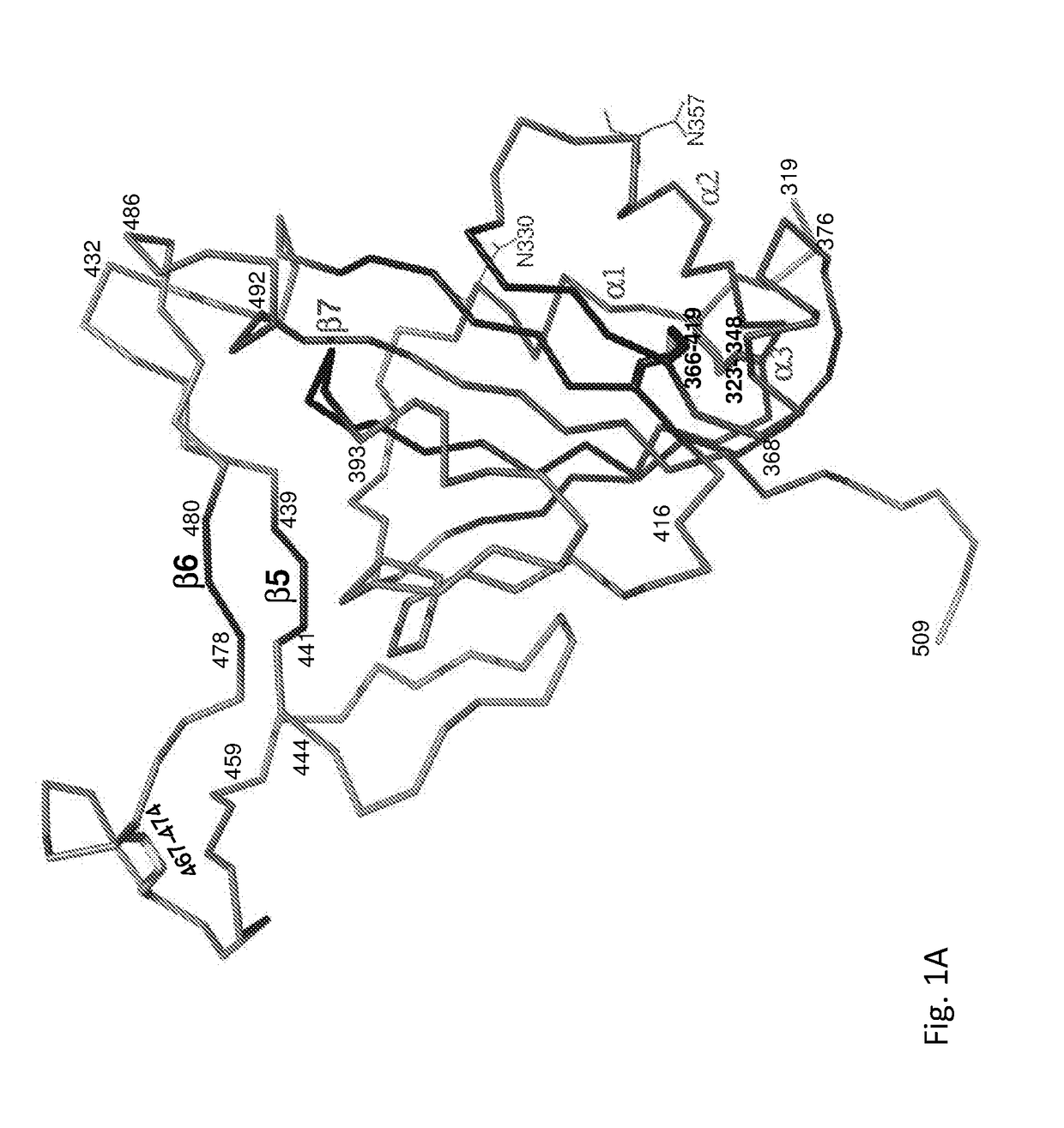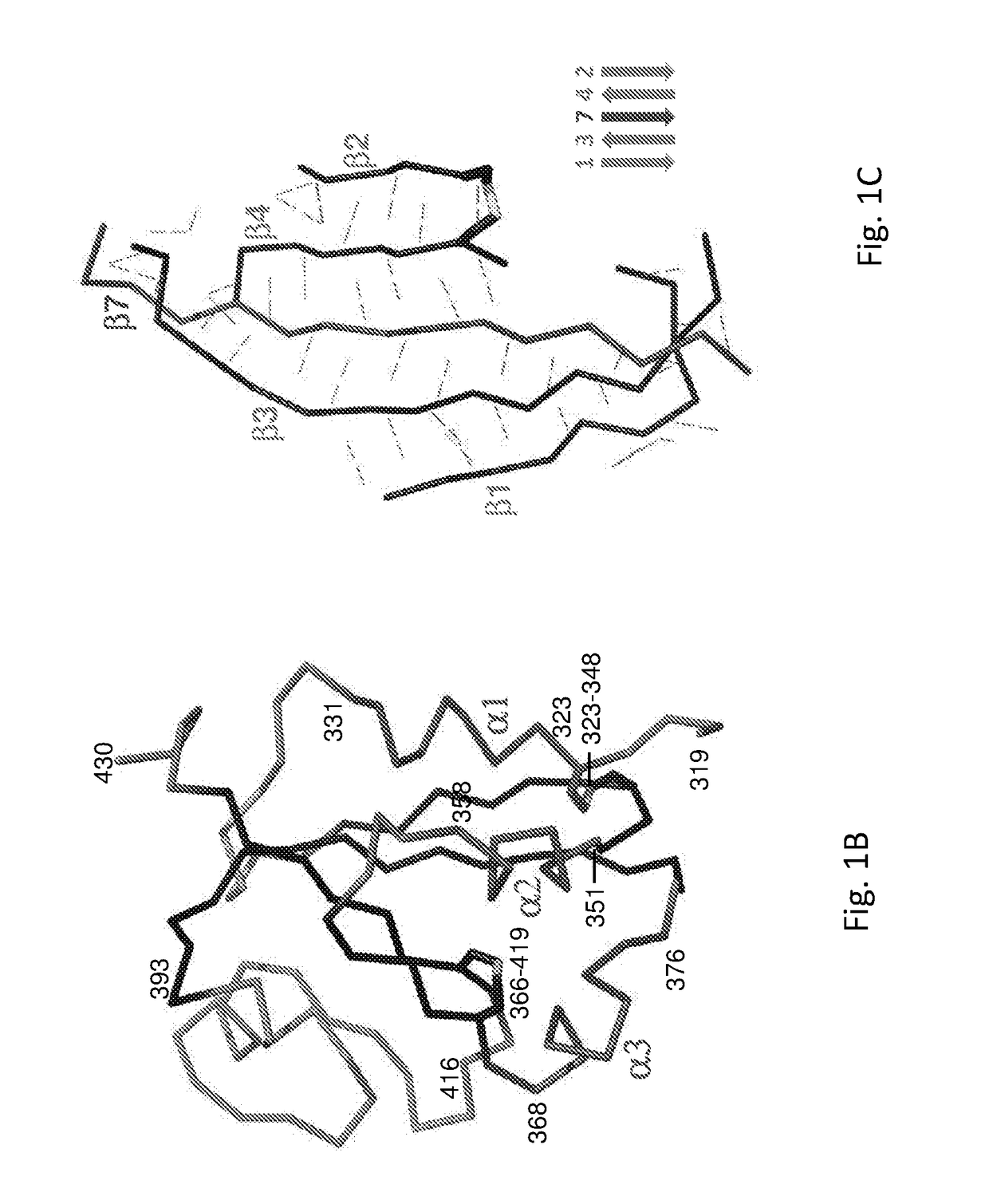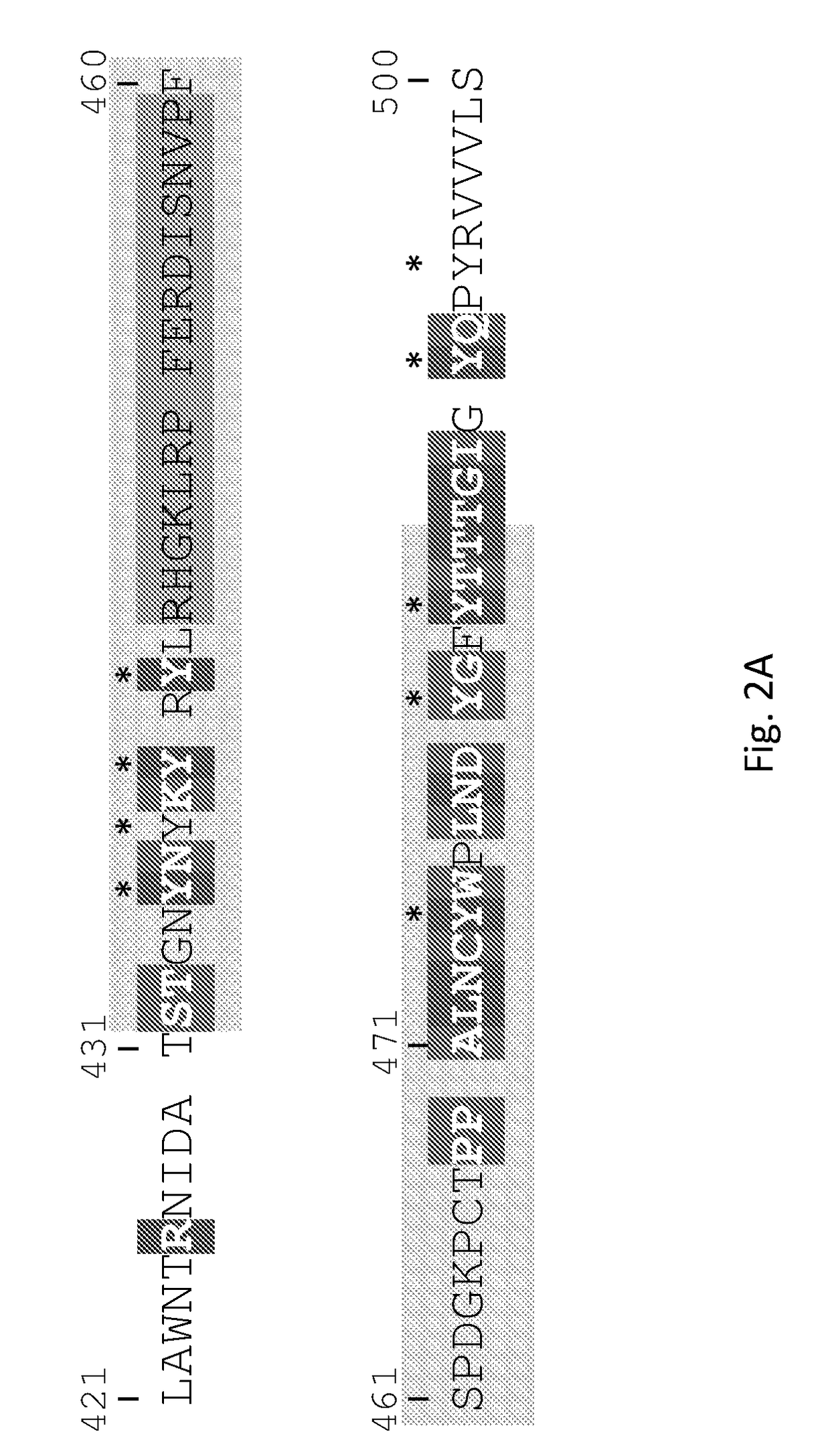Coronaviruses epitope-based vaccines
- Summary
- Abstract
- Description
- Claims
- Application Information
AI Technical Summary
Benefits of technology
Problems solved by technology
Method used
Image
Examples
example 1
Analysis of the SARS CoV RBD Structure
[0366]Construction of conformer libraries is based on expression of bona fide segments of the CoV Receptor binding motif (RBM) connected via vast collections of combinatorial linkers. The rationale is that various linkers will allow or impose upon the native segments to assume diverse conformations. Those linkers that induce a physiologically relevant conformation will be selected by panning the libraries with discerning ligands.
[0367]The atomic structure of the SARS CoV Receptor Binding Domain (RBD) was previously described at 2.9 and 2.3 angstrom (Å) resolution in complex with its receptor ACE2 and with mAb 80R, respectively. The amino acid sequence of SARS CoV RBD is denoted by SEQ ID NO: 33. The RBD structure from the mAb 80R co-crystal is depicted in FIG. 1A. As can be seen, residues I319 through A430 (denoted by SEQ ID NO: 28) create a compact core structure containing two glycosylation sites (N330, N357), two disulfide bonds (yellow bars)...
example 2
Development of Cloning Strategy for Different SARS CoV RBM Constructs
[0369]Initially, the native structure, residues S432 through T486 (denoted by SEQ ID NO: 3), was cloned into the SfiI sites of the phage-display fth1 vector (FIG. 3). Despite the fact that this construct contained most of the ACE2 and mAb 80R contact residues, no substantial binding for either ACE2 or mAb 80R was demonstrated.
[0370]In view of the fact that the 16-amino acid loop (residues R444-F459, also denoted by SEQ ID NO: 2) located within the RBM does not contribute any contacts with the ligands and presumably functions only to tack RBM to the core of RBD, the inventors hypothesized that it might cause some interference in the correct folding of the isolated binding surface. As a result, the inventors removed the loop thus generating a 7 Å gap between residues LA443 and F460 (FIG. 3). The RBD and the respective RBM formed after loop deletion are schematically shown in FIG. 4A and in FIG. 4B, respectively (wher...
example 3
Analysis of SARS CoV RBM Linker-Libraries and Binding of Affinity-Selected Phages to mAb 80R
[0372]No mAb 80R binders were selected from screening libraries of 1-mer and 2-mer random linkers. Therefore, the inventors concluded that although the entire theoretical complexity of linkers of 1 or 2 amino acids most probably was tested, none were able to effectively position the RBM-derived segments to assume a functional conformation. However, numerous positive clones were affinity-selected from both the 3 and 4-mer linker libraries. The amino acid sequences of the functional linkers were determined and compared as is illustrated in FIGS. 4C, 4D. Of a total of 800 colonies of phage variants screened from the 3-mer and 4-mer linker libraries, 45 positive clones were identified representing 16 unique linkers. Most of the mAb 80R-selected linkers contained a glycine residue in the first position and a negatively charged E or D at position 2. For the 3-mer linkers there was a propensity for ...
PUM
| Property | Measurement | Unit |
|---|---|---|
| Power | aaaaa | aaaaa |
| Power | aaaaa | aaaaa |
| Power | aaaaa | aaaaa |
Abstract
Description
Claims
Application Information
 Login to View More
Login to View More - R&D
- Intellectual Property
- Life Sciences
- Materials
- Tech Scout
- Unparalleled Data Quality
- Higher Quality Content
- 60% Fewer Hallucinations
Browse by: Latest US Patents, China's latest patents, Technical Efficacy Thesaurus, Application Domain, Technology Topic, Popular Technical Reports.
© 2025 PatSnap. All rights reserved.Legal|Privacy policy|Modern Slavery Act Transparency Statement|Sitemap|About US| Contact US: help@patsnap.com



